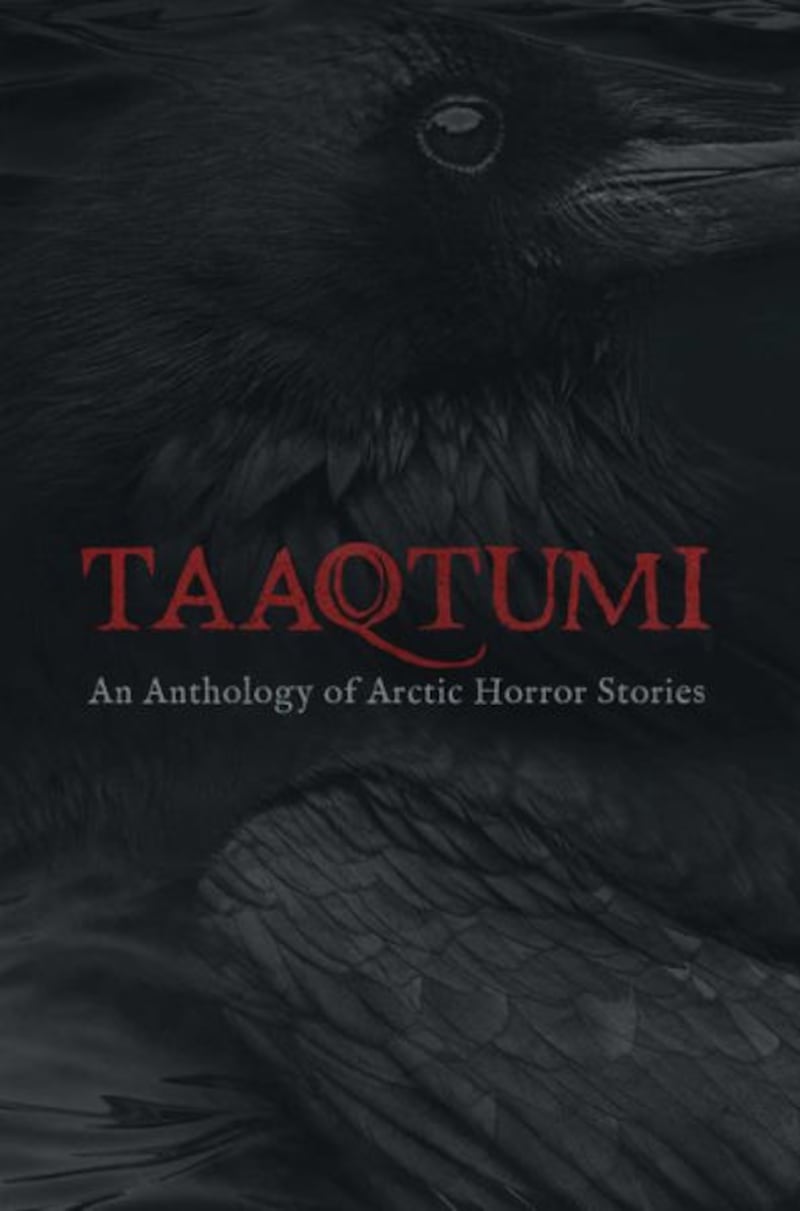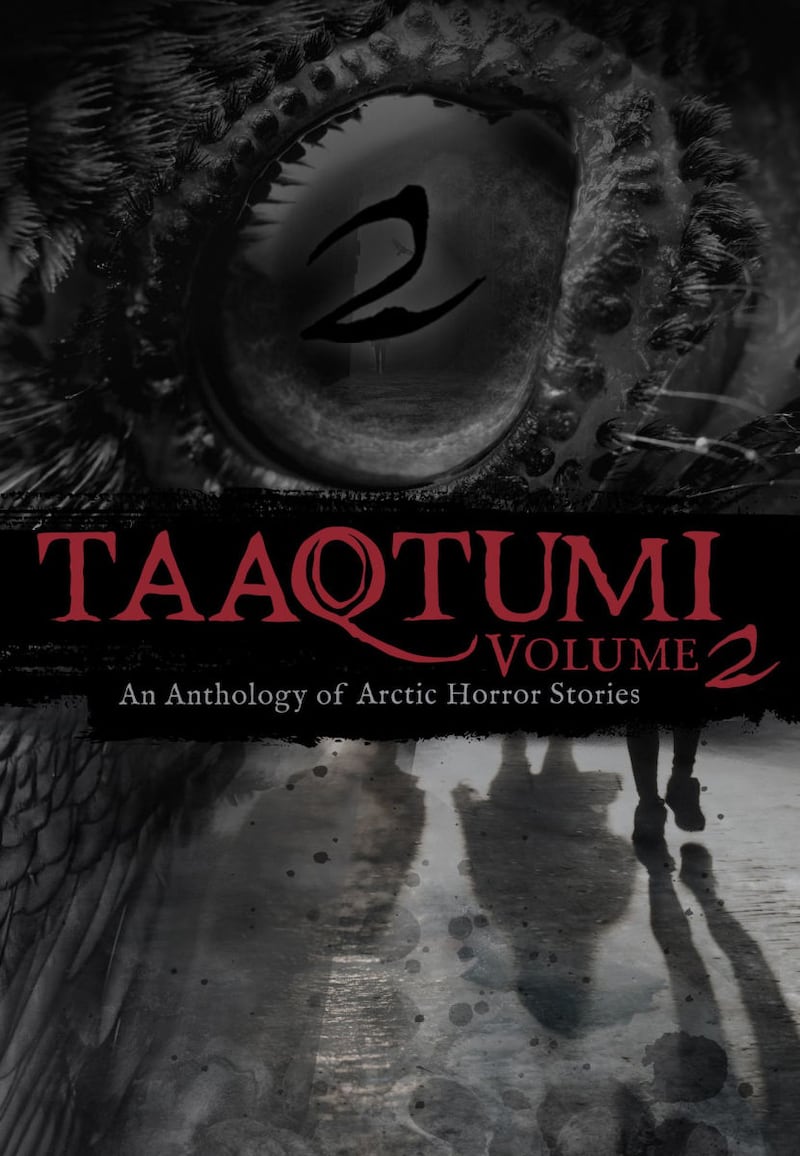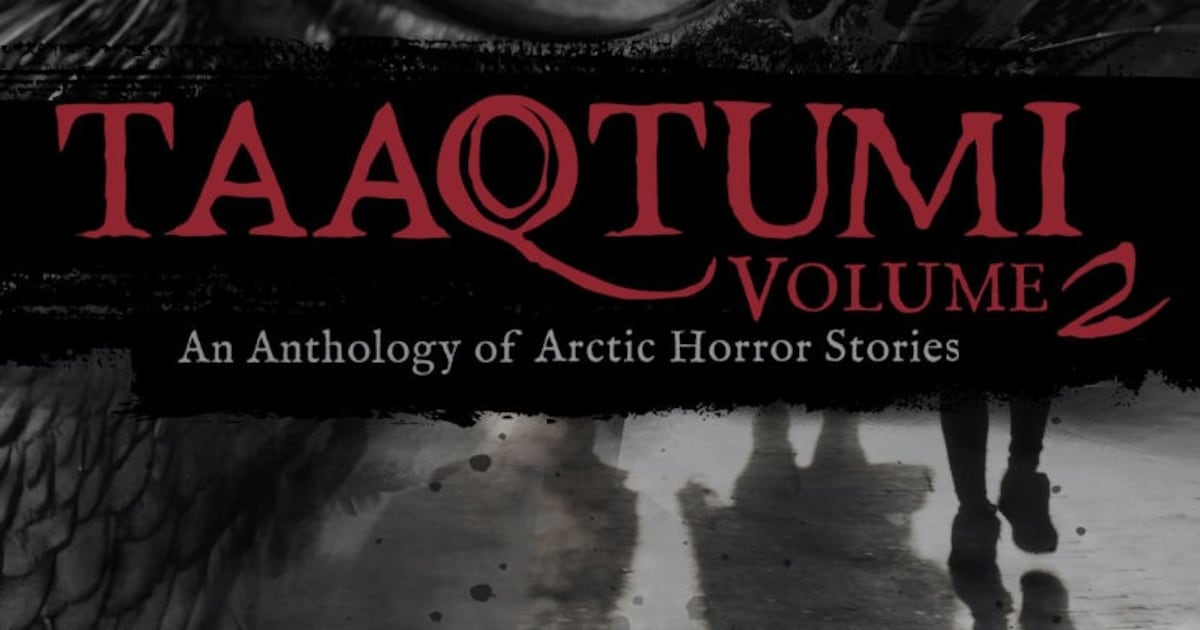“Taaqtumi: An Anthology of Arctic Horror Stories”
Edited by Neil Christopher, Kelly Ward, Grace Shaw and Kathleen Keenan; Inhabit Media, 2019; 180 pages; $19.95.
“Taaqtumi: An Anthology of Arctic Horror Stories Volume 2″
Edited by Neil Christopher, Kelly Ward-Wills and Anne Fullerton; Inhabit Media, 2025; 166 pages; $19.95.
Halloween lies just around the corner, and darkness is increasing its hold over our world. So there’s no better time than now to delve into a bit of horror, especially if it’s set far to the north, where strange things wander across the tundra.
Inhabit Media is an Inuit-owned independent press located in Nunavut, the self-governing Indigenous territory spanning much of the Canadian Arctic. Dedicated to preserving and furthering traditional Inuit culture and knowledge, and to bringing Inuit authors and illustrators to the page, many of Inhabit Media publications look to mythology, folk tales, and traditional stories, and the majority are aimed at children.
Not all of Inhabit Media’s releases are kids stuff, however. Some are intended for adult readers, and among them are the two volumes of “Taaqtumi: An Anthology of Arctic Horror Stories.”

The first book was published in 2019 and attracted global attention with the unique Inuit twists its the authors brought to a genre forever refreshing itself with new angles. The stories it brought together draw from the mythologies running deep in Inuit storytelling, myths that can, at times, take their own terrifying turns, yet are primarily set in contemporary times, with science fiction also on hand.
This fall a second volume hit the shelves, and it’s a worthy companion to its predecessor. Some of the authors from the first book have returned with new stories, and they’ve been joined by others new to the series. A number of those included in the two volumes are established writers, while some are still making their initial forays into print. None of them will disappoint their readers.

In some ways, the short stories found in these books will feel familiar to horror fans. Zombies rise from the dead more than once. Cannibalism is a recurring theme. Animals grown to enormous sizes send blood splattering. Shapeshifters haunt the lands. Bullets and spears fail to accomplish their intended purposes. Something goes bump in the night. And stray or orphaned children run for their lives.
The land is one thing setting these tales apart from many others found in horror fiction. It’s importance to Inuit culture and survival underlies more than one yarn found here, even if what happens on that land tingles the spine — spines, we are reminded, is where some of the best meat of a butchered animal can be had, and yes that includes animals walking on two legs, another thing we are told in these books. And the wisdom of elders, so important to North America’s Indigenous cultures, in a few cases proves to contain knowledge of the beings that stalk the land.
In “The Haunted Blizzard” by Aviaq Johnston, the opening story of the first volume, danger lies in the unseen, obscured by a whiteout but certainly there. It takes place in a small community, but the conveniences of modern life cannot prevent an ancient monstrosity from penetrating the town’s outer limits.
In Repo Kempt’s “Strays,” a traveling veterinarian carrying dark secrets meets her fate during a brief hitch on Baffin Island, where another blizzard furiously swirls, and a strange sound follows the woman wherever she goes.
Zombies, as mentioned earlier, stagger through the north. In “Utiqtuq” by Gayle Kabloona, the virus has long since reached the far Arctic, and three refugees, including a young child, subsist off the land, killing the odd undead human who bumbles their way. Salvation comes when a doctor carrying a vaccination arrives by plane with a pilot. Except, of course, things go astray, with a cliffhanger ending that seems to provide no further hope.
Kabloona is one of the authors who appear in both volumes, however, and in the second we learn the fate of her protagonist in “Utiqtuq: Chapter 2,” which leaves space for a third chapter that will hopefully follow.
The team of Rachel and Sean Qitsualik-Tinsley are also found in each book. Both times theirs is the longest submission, but there most of the similarity ends. “Lounge,” which occupies the middle pages of the first volume, is a brilliant slice of cyberpunk set in a climate-ravaged future, taking place in the claustrophobic confines of an abandoned mine far from civilization, where AI produces the terror.
“I Am Enough,” in “Volume 2,” reaches back into the 1960s, when a white social worker arrives in a far northern village intending to have her way on a culture she’s hopelessly incapable of understanding. Dark forces linger in the town, however, and ultimately they have their way with her.
In the first book, Jay Bulckaert’s “The Wildest Game,” is a first-person narrative of a man who comes to Yellowknife intent upon hunting and eating a fellow human. The horror lies in his methodical explanation of why he seeks to do this, a peek into a mind devoid of morality or humanity, yet somehow calm and, in his own logic, reasonable.
In “Saatapiaq” by Terrie Kusugak, late in the second book, the cannibals are children, foraging during a famine, finding what food they can. Mayhem ensues.
Kabloona surfaces twice in “Volume 2,” and her other story, “Watch It!,” is another science fiction tale taking place in a world done in by climate change. Unlike in the Qitsualik-Tinsley’s tale, however, this one occurs entirely outdoors as two sisters compete in a reality show race with other teams, scrambling through an arctic landscape where the last vestiges of glaciers send floods gushing down, and the true horror is human nature.
On it goes. Both of these books offer nightmare-inducing chapters that will keep readers turning pages long after bedtime. And both, helpfully, include glossaries of Inuit words, in keeping with Inhabit Media’s cultural objectives. The only thing missing is an introduction providing the reasons for the project and how it was accomplished. It would be a worthy addition to a third volume, which will hopefully be assembled and published in less time than “Volume 2” required.
Enjoy your Halloween.
[4 terrifying new novels to get you through spooky season]
